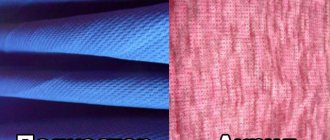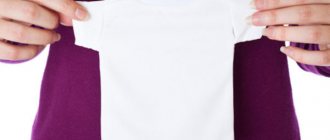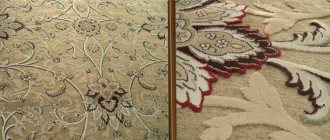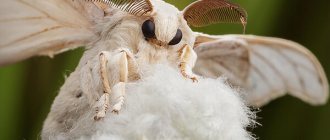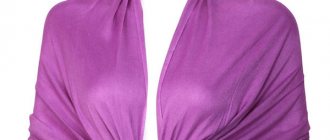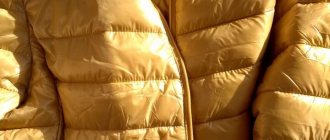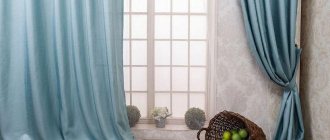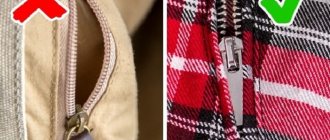What do these materials provide: description
When choosing clothes, buyers pay attention to the comfort and naturalness of the material. The modern market is dominated by synthetic fabrics, but there is a considerable selection of products made from natural ingredients. How to recognize them and make the right choice?
Natural materials
Cotton
One of the representatives that consists only of natural materials is cotton. It is the thinnest and short fibers that are twisted together. It has high strength and resistance to chemicals used for fabric care. Withstands fairly high temperatures, up to 1400 C. Hygroscopicity indicators are 18-20%. But, there are low rates of deformation, which leads to the fact that the material does not hold its shape. That is, cotton wrinkles a lot. In addition, it wears out quickly and dries slowly.
The positive characteristics of cotton include:
- soft and light to the touch;
- excellent breathability, which makes it indispensable when wearing in the heat;
- lends itself well to coloring.
Using cotton for textile production
Among the existing disadvantages, note:
- wrinkles very quickly;
- during washing it can be deformed and shrink;
- with prolonged exposure to light it becomes yellow.
Cotton has a huge range of applications. It is used to make underwear, bed linen and table linen. They are also used to create a huge range of both women's and men's clothing. Used for upholstery and textiles. High-density cotton is used in the processing of collars on men's shirts.
Cotton products have different applications
If you add 5% lycra to 95% cotton, what kind of fabric do you get? A variety that is significantly less likely to shrink and wrinkle.
You might be interested in what is PVC coated awning fabric
Viscose
Viscose is created from cellulose of natural origin. The thickness of the fibers, their strength, and therefore wear resistance, depend on how the raw materials are processed. In addition, the texture of the fabric is also different. It may look and feel like silk, cotton or wool. Therefore, you can even find a viscose jumper on sale.
The richness of the viscose structure
Additional Information! The process of creating fibers from cellulose was invented back in 1891 in England. And it was patented by the Frenchman J. Brandenberger in 1902, who devoted his entire adult life to viscose.
Properties of viscose:
- Excellent breathability. That is why such a variety as staple is widely used for sewing summer clothes - sundresses, robes, trousers.
- Softness. Thanks to this property, a wide range of bed linen is created, even for children.
- It retains its appearance perfectly, does not wear out or fade.
- Attractive appearance, pleasant texture.
Viscose has many varieties depending on the processing method.
There are many varieties of viscose. For example, what kind of fabric is made from 95% viscose and 5% elastane. The answer is simple viscose with elastane, the latter will give the fabric elasticity.
How to recognize cotton and rayon fiber
The most common way to check whether a fabric is cotton or synthetic is by burning several threads. After examining how cotton and viscose burn, it will immediately become clear whether the consumer purchased natural fabric or synthetic fabric, for example, made from nylon. Cotton or rayon threads turn to light gray ash, which crumbles into a fine powder when touched. Synthetic threads fuse and form a resinous lump.
How to recognize cotton and viscose fiber, since they are of natural origin? There are several ways to identify cotton or viscose:
- Differences can be determined by wetting the fabric. Cotton shrinks and its strength increases. Viscose, on the contrary, absorbs water well, but becomes too vulnerable. Therefore, when you spray a little liquid onto a viscose fabric, a slightly swollen ball forms at the point where the droplets hit. This is excluded on the cotton sample.
- The uniformity of coloring of the fibers on the product allows you to distinguish viscose. This is due to the difference in the dyeing process. If a pattern is applied to viscose fabric after its production, then with cotton the opposite is true. First, the threads are dyed, and only then the production of the canvas itself begins.
- When washed, cotton shrinks, and viscose can stretch. That is why it is not recommended to unscrew it.
You might be interested in this. Detailed description of tarpaulin: material features
Brightness and uniformity of coloring is one of the signs of differences between types of fabric
Using the mixture and caring for products
Cotton and viscose fabric is suitable for making men's, women's and children's clothing for all seasons.
They sew from it:
- robes;
- pajamas;
- shirts;
- dresses, sundresses;
- shorts, blouses.
The material is pleasant to the touch, cools in hot weather and warms in cold. Variations in fiber thickness make it possible to obtain fabrics that imitate wool, linen, and silk.
Advice. When purchasing items, choose a size larger, taking into account possible shrinkage.
The mixture should be washed by hand or on a delicate cycle at a temperature not exceeding 30°C. Items made from combined fabric can withstand up to 120 washes. The spin should be gentle at low drum speeds. The products do not need to be wrung out at all, but rather dried horizontally on clean, dry terry towels. To iron in the “silk” mode, you will need a damp cloth.
This may interest you - What is mercerized cotton
Comparison: which is better
Due to the fact that viscose is created from plant fibers, as well as the high-tech process, viscose is often difficult to distinguish from cotton.
Similarities:
- tactile sensations cannot be distinguished;
- there is no difference in moisture absorption rates;
- identical air exchange properties are determined.
Differences:
- Cotton is a durable material and retains its properties in any condition. When wet, viscose loses most of the listed properties. It is quite easy to tear and wrinkles quickly.
- Fabric price.
A combination of these two materials is often used. Combining them allowed viscose to increase its strength, but when wet it is slightly worse. In addition, it shrinks after wetting. Recently, a type of viscose that is similar to natural cotton has gained wide popularity. This type is devoid of most of the negative characteristics of viscose and cotton.
Viscose production
How is viscose-cotton blend made?
The main component used to produce viscose is wood cellulose. Even 100 years ago, the manufacturing process was quite labor-intensive. Modern technologies make it possible to work much faster, which may explain the huge range of products made from a viscose-cotton blend.
Children's textiles and clothing made from viscose-cotton blend
The process consists of several stages:
- wood chopping;
- cooking the resulting wood chips in a special alkaline solution;
- processing with the addition of an acid composition;
- mixing with a certain amount of cotton;
- processing mass into threads on a machine.
Drying threads
Important! One of the main ones is the process of drying the fibers, since it is this process that is responsible for the strength of the fabric in the future. Excess moisture has a detrimental effect on viscose.
Man-made fibers
Viscose clothing began to spread in the 1920s. It was by this time that scientists managed to create a fiber suitable for use in the textile industry from cellulose. They tried to solve the problem of creating an alternative to expensive natural silk for a long time, and it was assumed that viscose would be a worthy replacement.
The French engineer Ilie de Chardonnay is called the creator of viscose: in 1884, he first obtained a fiber with the desired properties. Officially, the discovery of viscose is assigned to the English chemists C.F. Cross and E.D. Bevan: in 1893 they received the corresponding patent.
Viscose is obtained from natural materials, such as wood pulp. To do this, the wood is crushed and heated in an alkaline solution, achieving a viscous homogeneous mass, which is pressed through a matrix with holes, obtaining monofilaments - they enter the acid solution and gain strength and hardness. The monofilaments are then dyed and spun into yarn.
Properties of viscose-cotton fabric
Cotton is one of the natural materials that has high strength and elasticity. If it is combined with viscose, then the indicators of these properties are slightly reduced, but a number of advantages also appear:
- The electrostatic effect is completely eliminated;
- brightness and color saturation after the dyeing process and maintaining the brightness of shades after repeated washings;
- softness and lightness, unlike natural cotton analogues;
- The complete absence of synthetics allows the fabric to be used to create children's clothing, suitable for people suffering from allergic reactions.
This will be interesting to you. Everything you need to know about Shuya calico for bed linen
Children's clothing made of viscose is bright and comfortable
Comparative characteristics
If you do not look at the composition of the product on the label, it is difficult to distinguish cotton from viscose. To the touch, these materials are very similar. However, they have significant differences that appear after the product has been worn for a period of time.
Artificial silk is the most elastic and has elasticity . These properties are achieved by the way cellulose is processed: it is processed using some chemical processes, for example, the use of an acid bath.
Cotton is highly durable and retains its shape for a long time, while viscose is elastic and has a bright color palette. Viscose fibers retain their colors longer, even after numerous washes.
Cotton products retain their properties , regardless of condition. When soaked, artificial silk wrinkles and tears easily, so it requires special care.
When making viscose, other fibers . This changes the characteristics of the material. If you use the same cotton fibers, rayon will become stronger, and by adding elastane, the elasticity of the material increases. The composition also affects the perception of the material: some types of viscose fibers are similar to silk, wool or cotton.
Reviews
Olga, Taganrog: “I want to dispel prejudices about the properties of viscose. I speak about this as a doctor. The best option for sultry heat is clothing made of viscose, or rather staple. The fabric does not contain toxic substances. Excellent air permeability, which prevents excessive sweat formation. In addition, it perfectly absorbs moisture. All this will prevent the proliferation of bacteria and protect against germs. And the brightness of the designs will add variety to your wardrobe set and lift your spirits.”
Victoria, Evpatoria: “I always preferred natural cotton. But recently a friend advised me to choose a viscose T-shirt. I doubted it for a long time, but I took the risk and did not regret it. The sensations are no different from products made from katon. Showed itself well in the wash and does not shrink. The only thing is you can’t twist it. But it doesn’t wrinkle when worn. I recently bought a couple of things for the child.”
Svetlana, Vologda: “I love cotton products. The naturalness of the material is captivating. I especially love cotton textiles. With its help, such comfort is created in the house, reminiscent of childhood, when I visited my grandmother in the village. Unique texture, delicate shades, and most importantly durability. This is very important if you use, for example, cotton tablecloths, which have to be washed several times. They will never break."
Cotton tablecloths
After familiarizing yourself with all the advantages of each material, the consumer will be able to make his own choice. It all depends on personal preferences and habits. Using products made from a mixture of cotton and viscose will be a compromise for those who find it difficult to decide.


